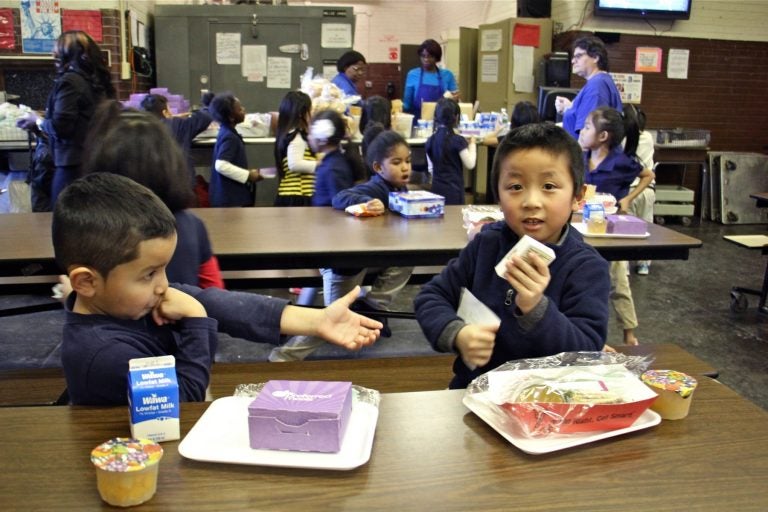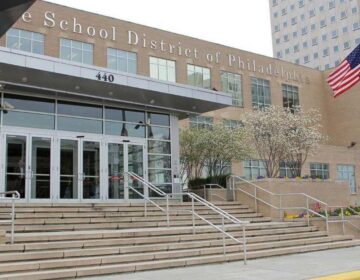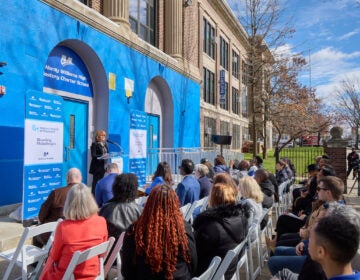Philly schools phase out Styrofoam tableware
Philadelphia schools are now using a compostable plate-tray hybrid made from recycled paper fibers.

Children at Southwark School eat their school lunches from styrofoam trays, Dec. 20, 2016. (Emma Lee/WHYY)
For decades, Styrofoam trays have been an indispensable part of the school lunch experience — emphasis on indispensable.
The trusty old trays can’t be composted or recycled, and they tend to last for a long time in landfills. That’s why Philadelphia public schools are making a big switch.
Between September and December, Philadelphia schools stopped ordering trays, plates, and bowls made from polystyrene (the generic term for what most people call Styrofoam), and they started ordering a compostable plate-tray hybrid made from recycled paper fibers. Officials now believe the last of the old trays has aged out of circulation.
Philadelphia was able to make the switch because it’s in the Urban Food Alliance, a coalition of 11 major school districts. By consolidating their purchasing power, alliance members have been able to “drive down” the price of the new plates, said Amy Virus, the district’s assistant food service director.
The compostable plates are still about 2 cents more expensive than their plastic foam predecessors. Since they’re suitable for many uses, though, the district orders about 288,000 fewer products each month than it did when it had to purchase separate bowls, trays, and plates.
“The cost impact is manageable because we’re using less items overall,” said Virus.
Ultimately the district wants to compost the new trays, and it has started a pilot program at four schools to test that out. Right now, the majority of the trays still wind up in landfills.
Still, that represents an improvement over the past, officials said, because the district is using fewer of the new trays and they break down in landfills far faster than Styrofoam. That means they take up less room.
And officials said they’re getting positive feedback so far from students.
“They’re liking the plates,” Virus said.
WHYY is your source for fact-based, in-depth journalism and information. As a nonprofit organization, we rely on financial support from readers like you. Please give today.





